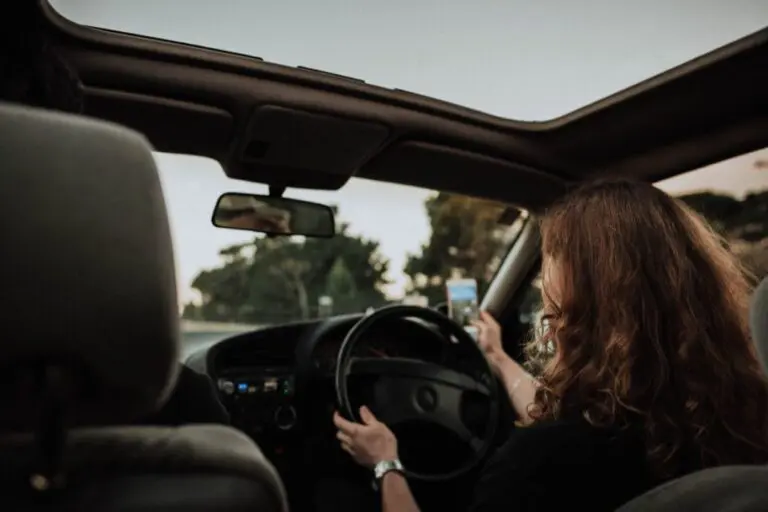The most common car accidents in the U.S., distracted driving accidents are often fatal and can usually be attributed to the negligence of a person or persons. Crossover distracted driving accidents involve a car, truck, motorcycle, or any other motor vehicle coasting over a road divider (painted lines, medians, etc) and moving into opposing traffic lanes of traffic. Most times, a crossover results in a head-on collision, making it a particularly dangerous form of distracted driving car accident.
Distracted Driving Statistics And Head On Collision Accident
According to (NHTSA) distracted driving statistics in 2020, distracted driving claimed the lives of 3,142 people in the US and is responsible for 15% of all crash related injuries.
Head-on collisions caused by distracted driving accidents are on a slow rise. In 2019, 3,119 people were killed in distracted driving car accidents, increasing to 3,142 in 2020. Additionally, distracted driving accounted for over 8% of all car accident fatalities in 2020, according to the NHTSA. A driver takes focus off of the road, choosing instead to interact with a cell phone or other electronic device, and causes his or her car to coast off the road. Learn more about distracted driving accident statistics.
Crossover Accidents in Pennsylvania
Crossover accidents are also generally known as crossover median accidents or cross-median car accidents; this is because these crashes most often involve a car crossing over the median barrier on a highway. In this type of case there is likely liability on the part of the driver who lost control of his or her car. There may also be an issue of design deficiency relating to the median barrier, which is meant to prevent the car from crossing over in the first place. That means that liability against the state or local government who installed the median may also need to be explored.
How Technology Affects Car Accident Cases
Technology has a tremendous impact on the way that we drive. Some technology has been created and implemented to help reduce the amount of collisions and accidents on the road. Therefore, many new car manufacturers are gradually increasing the amount of technology in their vehicles to make them even safer than previous models. However, not all technology has been helpful in reducing these issues. Many pieces of technology actually serve to distract drivers even more, and as handheld or portable technology becomes more prominent, the problem will get worse.
What Technology Contributes to Distracted Driving?
- Cell Phones: Cell phones are probably one of the items most likely to cause a car accident. According to studies done by the National Safety Council, cell phones are responsible for roughly 26% of accidents due to texting, talking, or app usage.
- Infotainment Systems: Because using these systems often requires the driver to take their eyes off the road, infotainment systems are also a major distractor in a vehicle that can lead to an accident.
How can Technology Prevent Car Accidents?
- Lane Departure Warnings: In some car models, cameras are built into the vehicle in order to determine where a lane begins and ends. If the driver begins to drift out of the lane, the car uses a warning system to alert the driver to the deviation.
- Steering Assist: Some vehicles also have a steering assist option. This means that when the car senses a deviation from a lane, the car will again use cameras to help guide the vehicle back into the correct lane.
- Adaptive Cruise Control: Similar to standard cruise control, this version uses sensors to determine the speed of the vehicle in front of itself, matching the speed instead of continuing at the same speed as set on the cruise control.
- Electronic Stability Systems: These have existed in many vehicles for a long time, but improvements to traction control help prevent vehicles from skidding or losing control on ice or other slippery surfaces.
- Parking Assist: These describe a variety of different options, from rear-view and forward-facing cameras that assist the driver when pulling into spaces, to some systems that will identify a parking space and park the vehicle without the driver even having to touch the wheel.
- Adaptive Headlights: These are swivel mounted headlights that move with the road, helping to see around corners before the vehicle goes around them.
- Blind Spot Detectors: Typically mounted on the side-mirrors, these allow drivers to receive warnings from the vehicle if it detects another vehicle in their blind spots.
How Can Technology Affect the Outcome of a Car Accident Case?
There are many ways that technology can impact the outcome of a car accident case. For example, all vehicles built after 2014 are required to have a ‘black box’ installed. This black box, known as an Event Data Recorder (EDR), can monitor and record various conditions that often lead to an accident, helping to prove the circumstances of the accident. It can record vehicle speeds, braking patterns, quick changes in velocity, throttle usage, airbag deployment, and whether the driver and passengers were using seat belts. Some EDR’s even record the weight of the driver, which can help prove who was driving.
Additionally, dash cameras have become very popular as well. These can be mounted in both the front and rear of a vehicle, and recorded to an SD card that can then be uploaded to a computer. This can help with disputes about who was at fault and whether the drivers were behaving abnormally when the accident occurred.
Additionally, some insurance companies now use installable telematics devices or sensors to determine a person’s driving habits before insuring them, giving them a better idea about whether the driver is responsible or not. Often, these pieces of technology can help resolve issues with insurance companies or civil suits regarding an accident.
Technology And Distracted Driving Car Accident Scene Investigation
Cell phone records can be used against you or in your favor during a car accident investigation and case. It depends on who is responsible for using the cell phone during the accident. However, there are other technologies that can also be used as evidence to prove or identify liability in a car accident lawsuit. These includes –
- E-mails and SMS or text messages.
- CCTV Video or other video footage. This can be used as evidence if the accident is captured by someone with a video camera or happened near a CCTV camera.
- Information tracked through GPS devices such as Garmin, Magellan and Onstar including the driver’s route, times, etc.
- Data from speed pass devices indicate where and when a vehicle was on the highway. Speed Pass, similar to cell phone records, can be subpoenaed.
- Traffic surveillance cameras are becoming more common throughout all US cities. These are used to identify drivers who do not obey traffic signals. Traffic surveillance cameras can also be useful to identify how a car accident happened.
- Black box technology is common on trucks; these are now also present in private passenger vehicles. Black boxes can record and store critical info during an accident. These black boxes are similar to those used in airplanes to review the cause of the crash and recreate the events leading up to an accident.
How is Technology Changing the Car Insurance Industry?
All of this technology in modern vehicles allows the way we drive to be transformed into usable data. This can help insurance agents by providing them with data that tells them what kind of driver they may be insuring, and thus offering rates that are highly dependent on whether they are a responsible driver or not. Additionally, our increasingly networked way of life allows these agents to quickly look up whether these drivers have been a part of past claims and their overall driving history. As previously mentioned, telematic devices that are installed by the driver can then transmit data about the potential customer’s driving style, which the agent can then base their decisions on which policies to offer the driver. Insurance agencies can also adjust their rates in response to the technology available within the car, discussed earlier in this article.
Trust Carpey Law For Your Distracted Driving Accident Case in Pennsylvania
If you were the victim of a distracted driving accident or collision in Pennsylvania, the accident was likely due to the other driver’s negligence. If your injuries are serious enough, you may want to speak with a Pennsylvania car accident attorney, experienced in these kinds of cases, to discuss your case. If a claim is to be made against Penndot or a local municipality for the faulty design of the roadway, which may have contributed to the accident, then there are very short time limits (6 months) within which you and your car accident lawyer must notify the government of your potential claim.
Technology continues to play a more important role in car accident cases. Stuart Carpey has over 30 years of experience as a top-rated personal injury attorney in Philadelphia and the surrounding areas. Contact Carpey Law if you were in an accident. We are here to help.

Stuart A. Carpey, who has been practicing as an attorney since 1987, focuses his practice on complex civil litigation which includes representing injured individuals in a vast array of personal injury cases.

